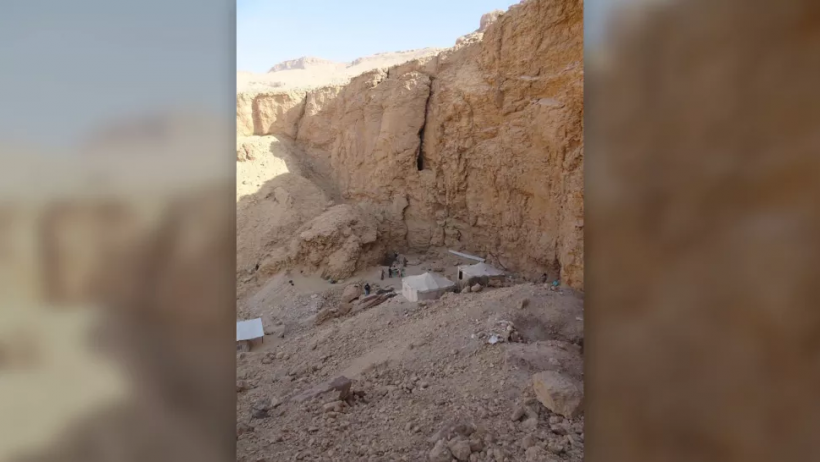Archaeologists in Egypt have uncovered an ancient tomb belonging to royalty, which is estimated to be around 3,500 years old. The tomb is believed to have been built during a period when Hatshepsut, a female pharaoh, shared power with another ruler. According to a statement from the archaeologists, the tomb was constructed during the joint reign of Thutmose III and Hatshepsut, as indicated by partial inscriptions and ceramic artifacts found at the site.
The tomb was discovered by a team of archaeologists from the Ministry of Tourism and Antiquities and the New Kingdom Research Foundation mission, which is affiliated with the University of Cambridge. The tomb was located in the Wadi Gabbanat el-Qurud area near Luxor, which is located near the Valley of the Kings.
Reign of Female King
Hatshepsut was a female pharaoh who reigned in Egypt during the 18th dynasty, from around 1473-58 BCE. She was the elder daughter of King Thutmose I and his wife Ahmose. Hatshepsut was married to her half-brother Thutmose II, who was the son of Mutnofret. Thutmose II inherited the throne in 1492 BCE with Hatshepsut as his consort. She had one daughter, Neferure but no son.
Hatshepsut's reign was considered unusual as she attained unprecedented power for a woman and adopted the full titles and regalia of a pharaoh. When her husband Thutmose II died in 1479 BCE, the throne passed to his son Thutmose III, who was born to a lesser queen named Isis. As Thutmose III was a young child, Hatshepsut acted as regent and ruled on his behalf, as per Britannica.
When Thutmose III came to the throne in 1479 B.C., he was a child, possibly only 2 years old. Hatshepsut, his stepmother, acted as his regent and later co-ruler until she died in 1458 B.C. During their joint reign, a temple was built at Deir el-Bahri, and Egypt successfully launched an expedition to a place known as Punt, which is believed to have been located in East Africa.

The tomb, located here, was found in October 2022 by a team of archaeologists exploring the Wadi Gabbanat el-Qurud, near Luxor.
ALSO READ: Ancient Egypt Achievements: Top 5 Prehistoric Inventions Humans Find Impressive Until at Present
Royal Burial
The recently discovered tomb is found to contain multiple burials and the architecture indicates that the tomb was modified shortly after it was first constructed. The archaeologists are unsure of who the tomb was initially built for. The surviving decoration and the size of the few accessible chambers suggest that it was a royal burial of some importance, most likely that of a great royal wife and several children of a Thutmosid king. The exact number of human remains that have been found is not clear.
Live Science reported that the tomb has been severely damaged by flooding in the past. According to the statement from the team, "Repeated flooding has filled the main axis of the tomb with concrete-hard debris and has caused the ceilings of the tomb to weaken and collapse."
The excavation and analysis of the tomb's remains are ongoing, and it will take several seasons to clear the chambers and make the tomb safe, as per the statement. The team members have not commented on the discovery yet. There have been several recent archaeological discoveries made near Luxor, including the discovery of a cache of priests, giant ram statues found near the Karnak Temple, and the mummy of a teenager who was buried with fine jewelry.
RELATED ARTICLE: Ancient Egypt Discoveries That Left an Imprint in 2022
Check out more news and information on Archeology in Science Times.










!['Cosmic Glitch' in Einstein's Theory of General Relativity Could Be Explained in This New Scientific Tweak [Study]](https://1721181113.rsc.cdn77.org/data/thumbs/full/53435/258/146/50/40/cosmic-glitch-in-einsteins-theory-of-general-relativity-could-be-explained-in-this-new-scientific-tweak-study.jpeg)



